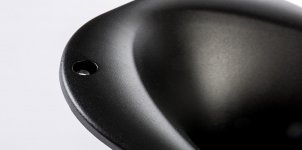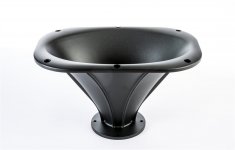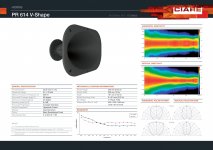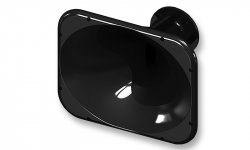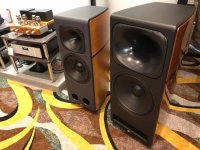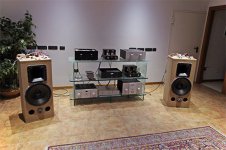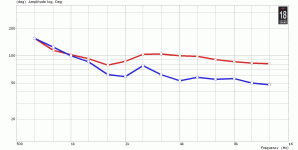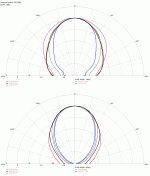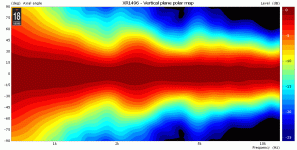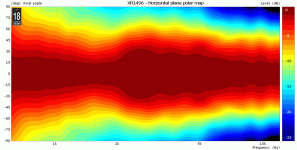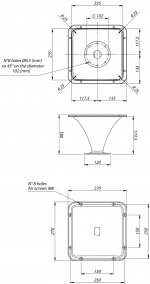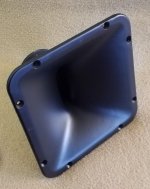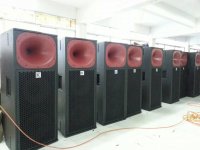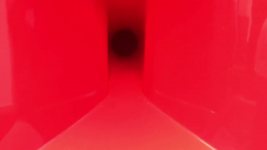Interesting. Could make decent surrounds.They http://www.richcomav.com/MaterialAttachPart/1221/max_2.pdf for some(??) reason called it "wide"
Holger Barske has tested the MAX 2 although the version with a LTH 142 waveguide:
https://www.unison-research.de/downloads/Unison_Max-2_Test_LP_2017-04.pdf
Regards
Charles
https://www.unison-research.de/downloads/Unison_Max-2_Test_LP_2017-04.pdf
Regards
Charles
…. and that horn doesn't even cost a lot and doesn't sound horn-like in any way. The only disadvantage is its narrow dispersion.
regards
Charles
One 18Sound engineer went to work for Ciare (now owned by 18Sound) and designed a similar looking horn.
The same guy is also responsible for the Faital Pro horns.
Attachments
Last edited:
I have seen the Ciare one on the US speaker website. It costs twice as much as the XT1464 and is only about 8" by 12" in size and made from cast aluminium.
It apparently has the same entry angle as the exit angle of one of the 1.4" RADIANs.
There is one big difference between this one and the XT1464: While the XT1464 is curved in the vertical and horizontal axis (I don't know what the mathematical function is on These) - this Ciare horn opens conically in the horizontal axis while the vertical axis is such that the area grows at a hyperbolic rate. It has therefore constant directivity in the horizontal axis and narrowing directivity towards higher frequencies in the vertical axis. A bit like the classic radial horns. There is even an academic paper around that deals with its development.
I was once interested in this one for a smaller MTM with 12" or 10" Woofers.
Regards
Charles
It apparently has the same entry angle as the exit angle of one of the 1.4" RADIANs.
There is one big difference between this one and the XT1464: While the XT1464 is curved in the vertical and horizontal axis (I don't know what the mathematical function is on These) - this Ciare horn opens conically in the horizontal axis while the vertical axis is such that the area grows at a hyperbolic rate. It has therefore constant directivity in the horizontal axis and narrowing directivity towards higher frequencies in the vertical axis. A bit like the classic radial horns. There is even an academic paper around that deals with its development.
I was once interested in this one for a smaller MTM with 12" or 10" Woofers.
Regards
Charles
Last edited:
(Italian) article on Dario Cinanni's FMJ-60 Daisy driver and the PR 614 Horn.
Attachments
-
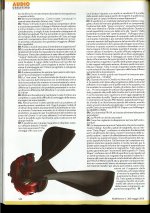 Ciare FMJ-60 Daisy_Articolo AudioReview_100p_Pagina_4.jpg923.1 KB · Views: 149
Ciare FMJ-60 Daisy_Articolo AudioReview_100p_Pagina_4.jpg923.1 KB · Views: 149 -
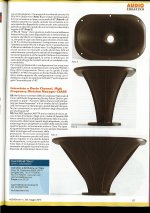 Ciare FMJ-60 Daisy_Articolo AudioReview_100p_Pagina_3.jpg765.2 KB · Views: 201
Ciare FMJ-60 Daisy_Articolo AudioReview_100p_Pagina_3.jpg765.2 KB · Views: 201 -
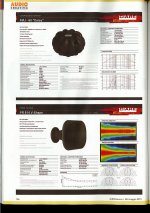 Ciare FMJ-60 Daisy_Articolo AudioReview_100p_Pagina_2.jpg669.8 KB · Views: 168
Ciare FMJ-60 Daisy_Articolo AudioReview_100p_Pagina_2.jpg669.8 KB · Views: 168 -
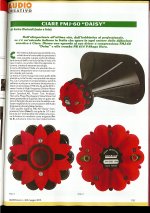 Ciare FMJ-60 Daisy_Articolo AudioReview_100p_Pagina_1.jpg698.8 KB · Views: 224
Ciare FMJ-60 Daisy_Articolo AudioReview_100p_Pagina_1.jpg698.8 KB · Views: 224
And his paper:
Attachments
-
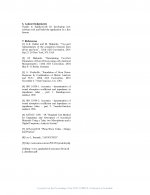 cinanni_paper_100p_Pagina_6.jpg510.1 KB · Views: 73
cinanni_paper_100p_Pagina_6.jpg510.1 KB · Views: 73 -
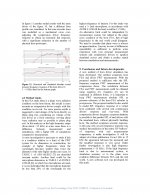 cinanni_paper_100p_Pagina_5.jpg679.1 KB · Views: 75
cinanni_paper_100p_Pagina_5.jpg679.1 KB · Views: 75 -
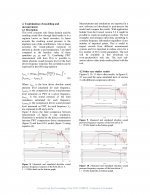 cinanni_paper_100p_Pagina_4.jpg596.4 KB · Views: 99
cinanni_paper_100p_Pagina_4.jpg596.4 KB · Views: 99 -
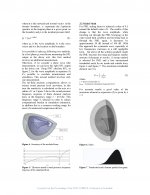 cinanni_paper_100p_Pagina_3.jpg819.9 KB · Views: 96
cinanni_paper_100p_Pagina_3.jpg819.9 KB · Views: 96 -
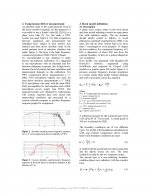 cinanni_paper_100p_Pagina_2.jpg597.1 KB · Views: 116
cinanni_paper_100p_Pagina_2.jpg597.1 KB · Views: 116 -
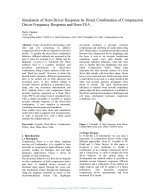 cinanni_paper_100p_Pagina_1.jpg661.4 KB · Views: 146
cinanni_paper_100p_Pagina_1.jpg661.4 KB · Views: 146
Last edited:
The rectangular one could also be the XR1496 with an oval diffraction slot. I guess the XT1464 is better soundwise that that one.
I wonder why they finally went for the LTH142 on the Max 2. Maybe just because it looks better than th XT1464. Who knows ?
Regards
Charles
You're correct, it's the XR1496.
There is no reason to choose the LTH142 over the XT1464, other than looks.
All 18Sound horns sound good, although the plots vary.
Last edited:
The XR1496 seems to rely on diffraction while the XT1464 doesn't. This might cause some other differences than just the dispersion.
But I could imagine that it is probably less severe with its smooth lines compared to all the horns with diffraction slots designed with parallel sides and narrowing straight/flat walls behind them.
Regards
Charles
But I could imagine that it is probably less severe with its smooth lines compared to all the horns with diffraction slots designed with parallel sides and narrowing straight/flat walls behind them.
Regards
Charles
Ro, you know everithingGerman manufacturer Seeburg Acoustic Line developed another interesting elliptical horn.
Nowadays, they mostly use the known Italian horns.
What can you tell about Seeburg 90x50 https://www.seeburg.net/pics/zubehoer/01598_K24Horn_2_de.jpg ?..
Now if we could get rid of that bubble in the throat.
Norman, what do you mean by "bubble" ?
Regards
Charles
- Home
- Loudspeakers
- Multi-Way
- Is it possible to cover the whole spectrum, high SPL, low distortion with a 2-way?
